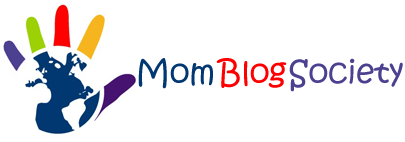Any business has risks. Projects may not finish on time, vital information may get lost, or decisions may be delayed just long enough to miss an opportunity. Not all risks can be avoided, but fragmentation is a big part of the operational risks that firms face. There will always be gaps when teams use one technology to manage projects, another to store papers, and a third to talk to each other. These gaps can lead to confusion, duplication, and missed signals, which can cost a lot of money.
Modern project management tools reduce this risk by combining diverse systems into one workflow. Teams can see, be consistent, and be responsible without wasting time trying to figure out what to do when information doesn’t match up. Lark highlights how connected features minimize operational risk by making everyone more sure of what they are doing at every level of execution.
Lark Base: Creating reliability through shared structure

One of the major problems for companies that move quickly is that they can’t see what’s going on. When different departments have their own trackers, executives don’t see the complete picture and workers do the same things without realizing it. By combining all of your projects, tasks, and data into one customizable system, Lark Base decreases this risk.
For instance, Lark Base brings the features of CRM app, such as tracking, monitoring, and data visualizing. Sales can easily link sales leads, client interactions, and processes to deliverables. Kanban view is used by marketing to plan campaigns, and timelines are used by operations to plan resources. Everyone has access to the same version of the truth because all changes go to the same place. This openness makes it less likely that promises won’t be kept or that expectations won’t match up. Leaders can be sure that nothing is missed because workers know exactly what they need to do.
Lark Docs: Reducing errors in collaboration

One sign of operational risk is how well teams work together on paper. There could be multiple drafts of the same report in different email threads, and it’s hard to tell which one is the final one. When employees use old versions, even tiny mistakes can build up, which means they have to do more work that doesn’t need to be done.
Lark Docs stops this by making documents open resources that come to life. Teams can work on the same document at the same time, and comments and version history show who is in charge. Everyone who helped can always see feedback. Because Docs link to Base or Tasks, plans that are done move right to execution instead of sitting around. By reducing down on version confusion, documents minimize the possibility of mistakes and make sure that working together leads to consistent results.
Lark Calendar: Making time a source of confidence

Deadlines are one of the most prevalent times when operational risk happens. If one team doesn’t keep its word, the whole project could go wrong. When departments have their own calendars, timetables soon get out of sync, which poses challenges for the overall organization.
Lark Calendar fixes this by adding time to workflows that are linked. Milestones set in Base flow right into Calendar, where everyone may view them. Docs and agendas are now linked in meetings, so decisions may be made immediately away instead of having to wait for discussions that aren’t ready. Automatic time zone modifications fix scheduling problems all across the world. Calendar makes time a trustworthy thing by making sure that deadlines are clear and dependable.
Lark Approval: Structuring risk out of decisions

Decisions that get stuck or lost in email chains are a common source of operational risk. Requests for money, vendor contracts, or regulatory clearances are put on hold, which makes it hard for workers to know if they can move forward. These delays might not only slow down projects, but they can also put the organization at risk legally and financially when procedures aren’t the same.
Lark Approval helps with this by giving people a clear and organized approach to make choices. An automated workflow handles routing, escalation, and reminders for all employee requests in one spot. Managers act quickly, and workers can see how things are going without having to ask for updates. This predictability decreases risk by making sure that approvals happen on time and in the same way across the firm.
Lark Wiki: Preserving knowledge to prevent mistakes
When people leave or teams grow, vital information is sometimes lost. If there isn’t a central system, new employees could make judgments or change processes without having all the facts. This creates operational risk since it forces firms to depend on humans instead of working systems.
Lark Wiki solves this by letting everyone share information. Policies, playbooks, and best practices are written down once and then updated straight away all around the firm. From the start, new employees can get the right information, and experienced workers can keep up with changes in procedures. Wiki keeps institutional memory alive, which means that knowledge stays around. This makes it less likely that people will make mistakes when they presume or duplicate things.
Lark OKR: Reducing strategic misalignment

Operational risk isn’t just about making mistakes; it’s also about losing time. Teams might be able to get things done quickly, but if what they do doesn’t match with the organization’s plan, they will still lose. One of the biggest hazards of expanding a business is that things don’t work out.
Lark OKR minimizes this by connecting goals to daily chores. Base and Tasks automatically send out updates on progress when leaders set goals and measurable key results. Not only do employees know what to do, they also know why it’s vital and how it helps the organization do well. This alignment decreases the likelihood of squandering energy and makes sure that resources are employed where they will have the most effect.
Conclusion
You can’t get rid of risk in business, but you can control it. Internal fragmentation, not outside influences, is the main thing that causes operational risk. When tools aren’t connected, information gets duplicated, and it’s not clear who is in charge, mistakes and delays are going to arise. Unified platforms like Lark minimize this risk by making all levels of work more transparent, accountable, and aligned.
Base provides things a shape, Docs help people work together without making mistakes, Calendar makes sure time is predictable, Approval speeds up choices by using automation, Wiki keeps institutional knowledge protected, and OKR keeps strategy in line with execution. These traits work together to make risk management a built-in safety net instead of something that happens after the fact.
Leaders can see the confidence factor: when everyone uses the same tools, operational risk goes down, and organizations can focus on growth instead of putting out fires. Confidence isn’t just a good thing in markets that don’t know what to do; it’s necessary.





After my shift at the construction site in London, I open Spreadex Casino. I sit in my flat in the East End, rain falling outside the window, and place my bets. After a day of concrete and dust, this is my way of unwinding. Our British evening ritual.